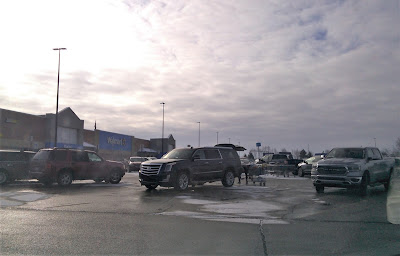At all levels of governance, United Nations, USA President Biden, many governors among the 50 USA states and perhaps among the territories, as well as from the mouths of (big city) mayors there is recognition of value in and pledging to "build back better" with a minimum wage that lifts a worker with a family above the statutory annual income poverty line (definition). Examples are the policing habits and mandatory sentencing (social justice), higher education and health care as a basic right (regardless of ability to pay), unequal access to clean air and water (environmental justice), and obstacles to building generational wealth ---burdens touching all lives, but proportionally more costly for those starting with fewest financial, informational, and social resources to drawn upon. In other words, using pre-Covid standards as the benchmark for restoring a state of 'normal' is not sufficient, not desireable, and not right.
In the video clip the carillon that plays at noon and again at 6 p.m. on weekdays at this church evokes many things about the pre-pandemic routines of the week that formerly comprised normal, proper, and generally pleasing parts of the social landscape. For example, the church annual cycle of events was one set of calendar markers that structured many residents' year. Dining out, vacation or business travel, and the many functions of consumer society all filled people's imaginations, budgets, and schedules. Focusing on the front end of those processes --- choosing what to eat, where to go, what to buy for self or as a gift for others --- there used to be an element of hunter/gatherer thrill of the chase: spotting the thing to satisfy one's goal. To complete the circuit from idea to pursuit to purchase to consumption there used to be a set of conditions (pre-coronavirus) that were taken for granted and now (during the pandemic) have been either prohibited, ill-advised, or otherwise abandoned. There was the fuel burned in driving from retail place to place (in Covid times substituted to some extent by online browsing, wishlists, and deliveries). There was the recycle or landfill burden of transport packaging and retail boxing that is discarded. And psychologically there was the imaginary land of endless purchase, use, disposal; as if one's individual indiscretions and feelings of wanting, deserving, or feeling obligated to go out and get something was disconnected from carbon footprint, energy consumption, food waste, and all the other components adding up to the USA 5% of the world's humans using up 20 or 25% of the planet's energy.
So what might this "build back better" look like? The list of issues, above, touches on some examples that may be engaged with seriously to find local expressions for attaining the goals and addressing wrongs of present and future (maybe even compensating for past wrongs, too). But from the experiential level of individual "life chances" or dreams and realities of people in all points along the social and economic status spectrum there will be other changes to look for; things that translate from the slogan level to the lived-in level.
For the sake of this argument and skipping over all the conflicts, obstacles, excuses, and special interest lobbying, suppose that minimum wage does go up and working hours go down. That could lead to more consumer activity - in direct contradiction to the Green Economy recognition that the carbon footprint must be reversed for this generation and for the burgeoning human populations on all continents that are yet to come. Not reining in the consuming of fossil fuels only worsens the extreme weather, expands the destruction of habitat --including water and air for humans, too--, and accelerates the extinction of diverse plants and animals of air, land, and sea (and non-salty waters, too). So from the experiential, first-person point-of-view, better laws and enforcement, along with income levels improving, results in individuals having greater social, economic, and aspirational reserves to face good times and bad, normal life and the times of disaster from natural source or human cause.
Supposing, further, that big consumers of the G-20 societies where much of the global energy and resources are used up (not just to survive, but for discretionary uses) were now to cultivate a mindset of conserving water, air, species, and material wealth (make it last, right to repair, barter and down-cycling before recycling). Then the limited resources and the renewable resources will be consumed at their HABU (highest and best use), rather than to be squandered in unsystematic, careless ways. At the personal level as well as at the organizational scale this new mentality would translate into amplified mindfulness about disposition of resource and its final disposal, and before that, careful use of the things one is in charge of using. Much more of the economy's services and products, and leisure pursuits will leverage the savings of time, knowledge/expertise, and fuel by using Internet for communication and engagement in a subject virtually instead of in-person, face to face.
Finally, if it were so that health care and higher/further education were guaranteed rights obtained in one's citizenship and in one's active contribution to society (paid or unpaid work, building rather than breaking the social fabric), then people from all walks of life could imagine bigger and better futures for self and others. The possibility of pursuing one's dreams would be actually within reach, unhindered by matters of net worth or generational wealth/poverty and social capital in the names and interpersonal debts and credits among the constellation of one's own contacts.
Taken all together, "building back better" instead of "back to normal" is exciting to think about. Some parts may actually take initial or even final form, but other elements will remain talking points to aspire to in the next generation of people participating in "the art of the possible," as the political arena has been characterized over the years.

